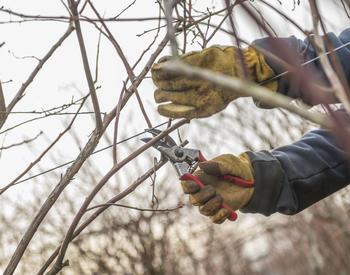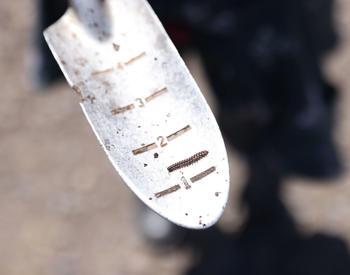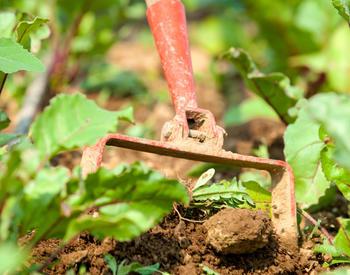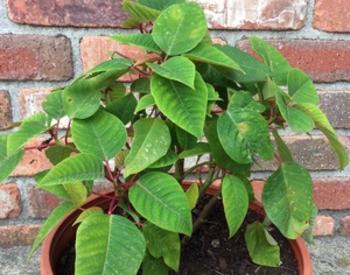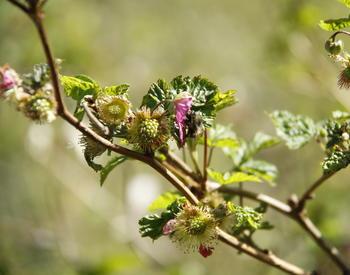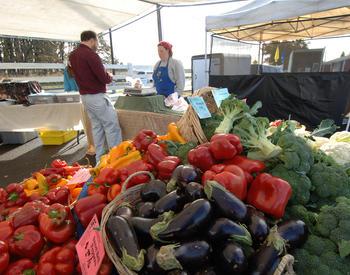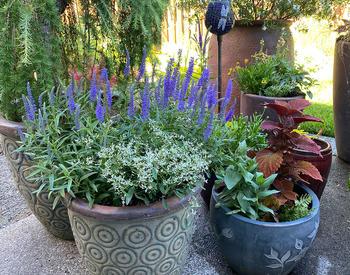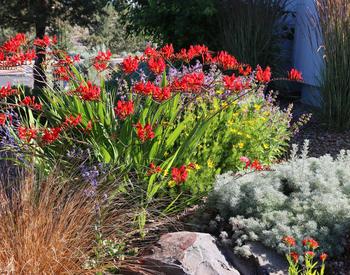Transcript
In this segment, we're going to demonstrate thinning the canopy on a crabapple tree. The crabapple tree has a form that it really adapts to, and this is what it likes to do. However, there are some things that we can do to open this up a little bit. What you see at the base are some of the sucker growth that's coming off of the root of the tree. There are also some other sprouts in the tree that have launched out as well that aren't helping the tree in any way. We can also get in and remove some of the crossing branches and those that are tending to hide a lot of light and airflow through the tree.
It's really up to the homeowner whether they want to keep the tree as is, especially if they have space, or if they want to prune it up so that we can lift the canopy and open it up a little bit more to enjoy maybe a little larger fruit.
Tom is currently doing a quick job of taking out those sucker growths from the base of the tree, while I'll go in and start on some of the work inside, focusing on crossing branches. We're not necessarily clearing everything down to ground level, but rather creating a more open feel to the tree with proper thinning cuts.
It's important not to over thin these trees as they can sun scald very easily, especially with a lot of afternoon sun exposure. We want to avoid taking too much out of it in one turn.
We're getting some of those branches that are crossing each other or rubbing on each other, and also opening up with a few thinning cuts to allow more light and air to flow through, which can help produce larger fruit and benefit wildlife.
We're mainly addressing the lower parts of the tree, seeking the ones that are growing almost straight downward and getting those that are angling just a little more upright, but not too upright.
We're also cutting back to fruit spurs when possible so that we'll still get flowers this spring. The timing of this work depends on the tree and the desired outcome. Spring is ideal, but for some trees, it might be better to wait until after the flowers have produced and started to dry up before starting this pruning work.
So in this segment, we're going to demonstrate thinning the canopy on a crabapple tree. Now, the crabapple tree has a form that it really adapts to, and this is what it likes to do. However, there are some things that we can get in to do and open this up a little bit. What you see at the base are some of the sucker growth that's coming off of the root of the tree. There are some other sprouts in the tree that have launched out as well that aren't helping the tree in any way. And also, we can get in and get some of the crossing branches and those that are tending to hide a lot of light and also, you know, airflow through the tree.
So, it's really up to the homeowner whether they want to keep the tree if they have space like this, with the exception of those water sprouts or suckers they might be called at the base, or they want to prune it up so that we can lift the canopy and open up a little bit more and enjoy maybe a little larger fruit. So, Tom right now, he's just doing a quick job of taking out those sucker growths from the base of the tree. And while he's doing that, I'll go in and just start on some of this work inside, crossing branches here. So you see I'm taking off some of these drooping branches to lighten up the other branches. So again, we're just creating a little more open feel to the tree, not necessarily clearing everything down at ground level, but once again, doing what's called a proper thinning cut.
Something else to keep in mind is we don't want to over thin these either. They also sun scald very easily. You see, it's a very thin bark on this, and this is a lot of afternoon sun exposure here. So, we don't want to take too much out of it in one turn. So, you get the idea. We're getting some of those branches that are crossing each other, rubbing on each other, and then also just opening up with a few thinning cuts to allow more light and then air to flow through, and again, perhaps even produce a little larger fruit if that's what you like. For wildlife benefit, really, I'm just addressing the lower parts of the tree, like instead of getting into the upper parts as Tom mentioned, mainly seeking the ones that are growing almost straight downward and getting those that are angling just a little more upright but not too upright. And okay, also cutting back to fruit spurs when possible so that we'll still get flowers this spring.
So, you might be asking yourself, "Well, when is the right time to do this type of work and this type of pruning?" Well, it all depends. Spring is ideal, of course, late winter, early spring. But then on some trees, you may just want to get the flower show with every branch possible on the tree, and you could wait until after the flowers have produced and then started to dry up before you start this pruning work. It is a little better for the tree to do it in advance; however, you do have that option. Okay, do you think it shows enough, the difference? Yeah, I think that, you know, one of the things I'm always trying to emphasize is like, less is better. Yes, how do you say that? It's hard to demonstrate less; it's really easy to demonstrate more.
